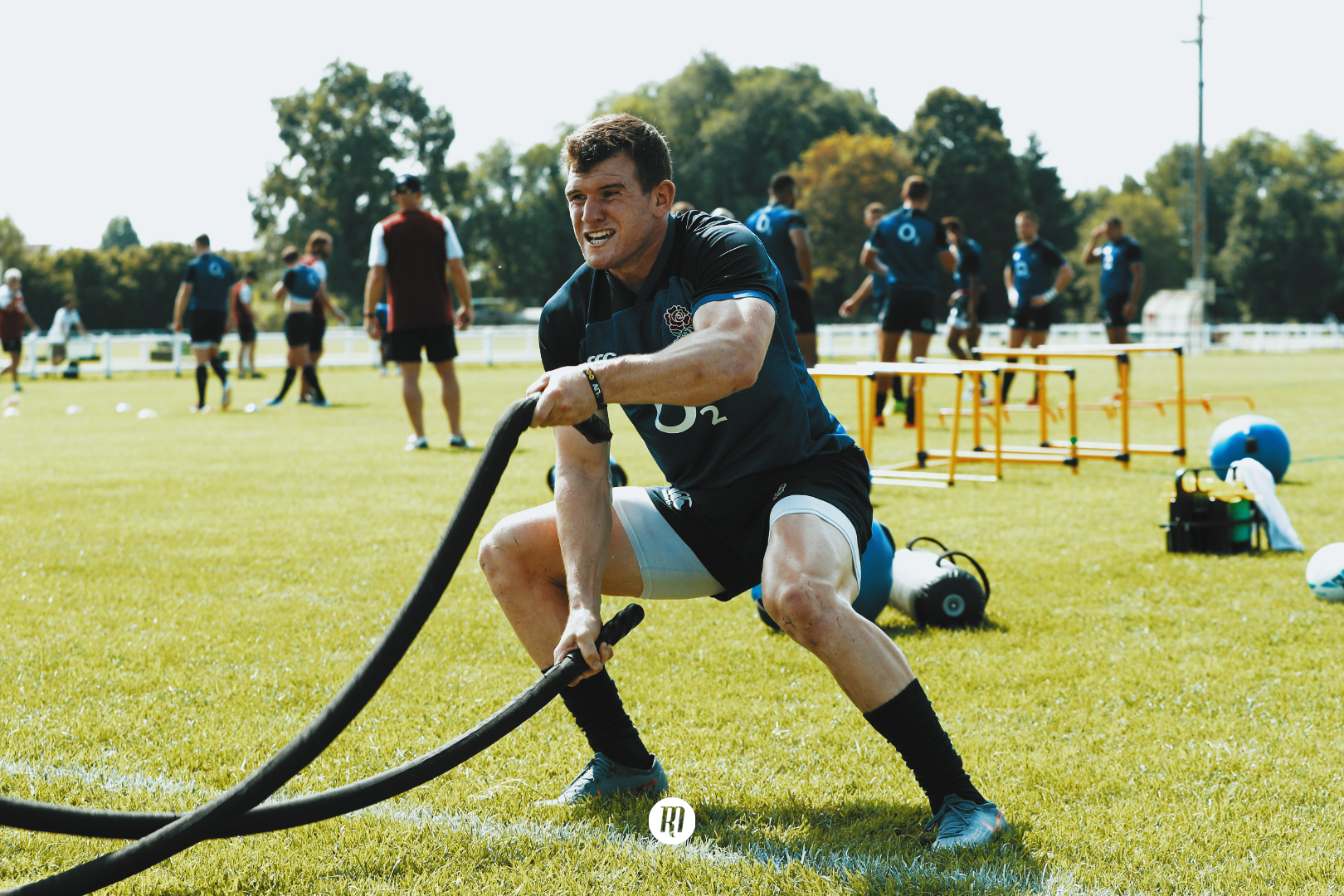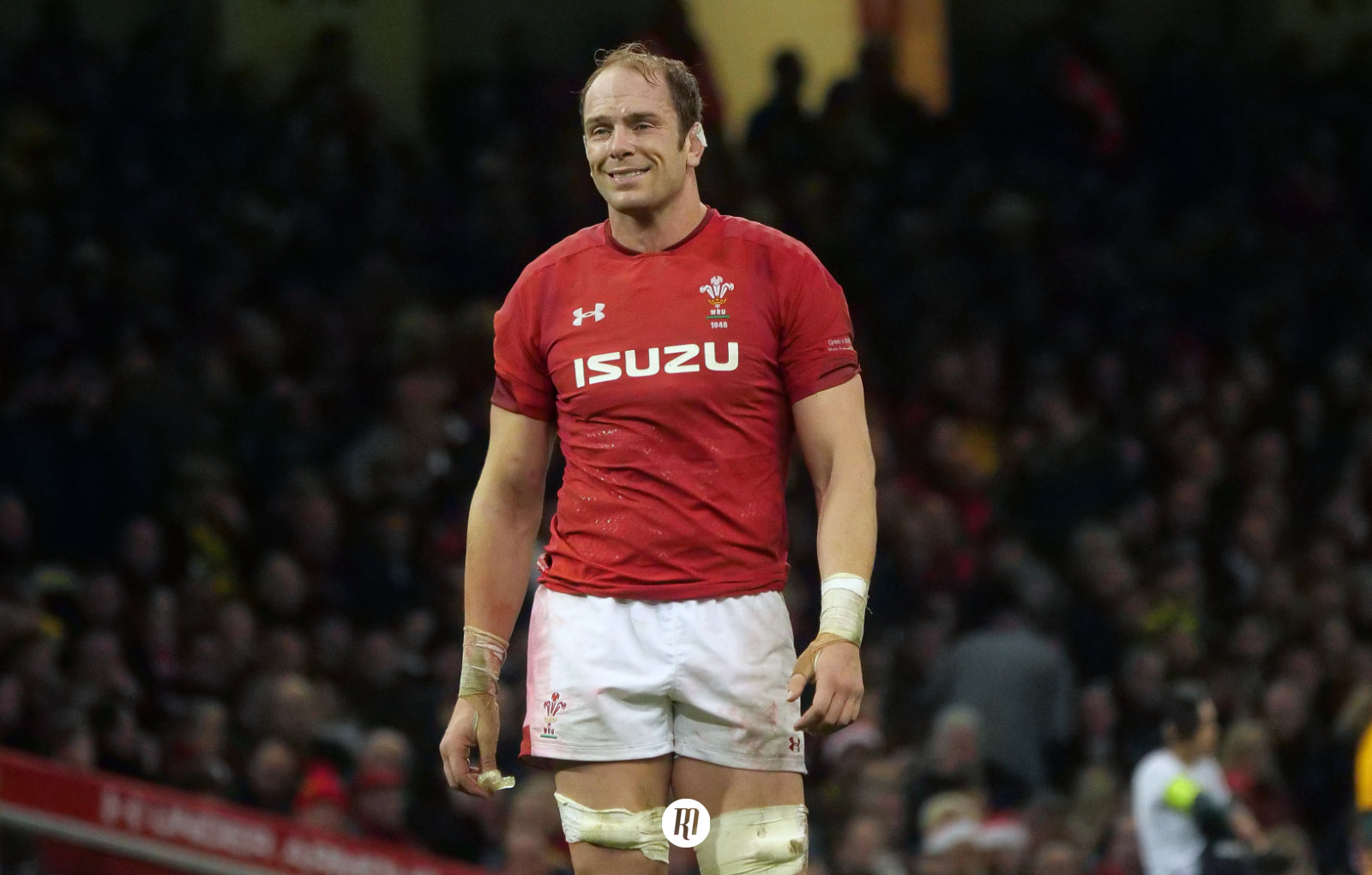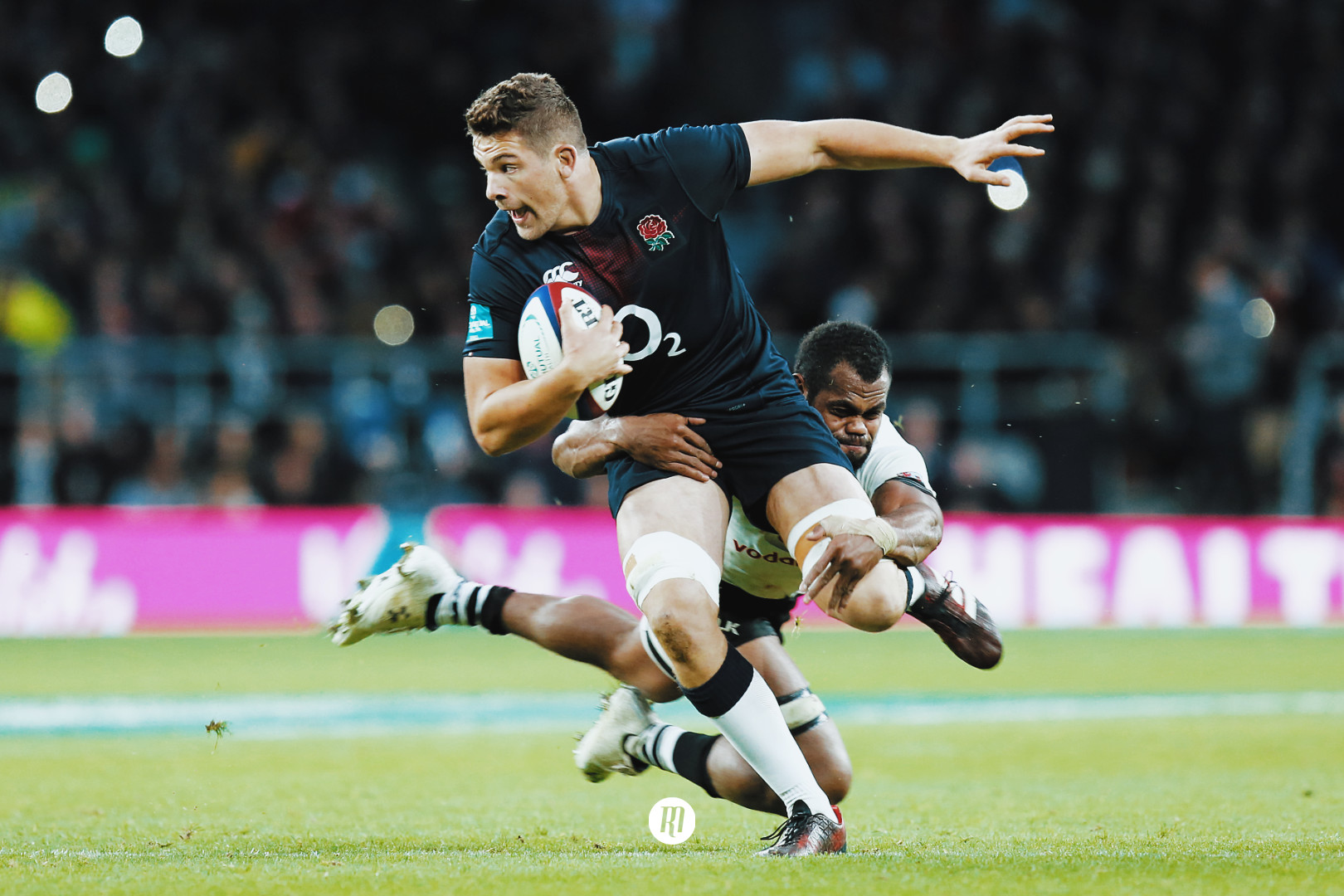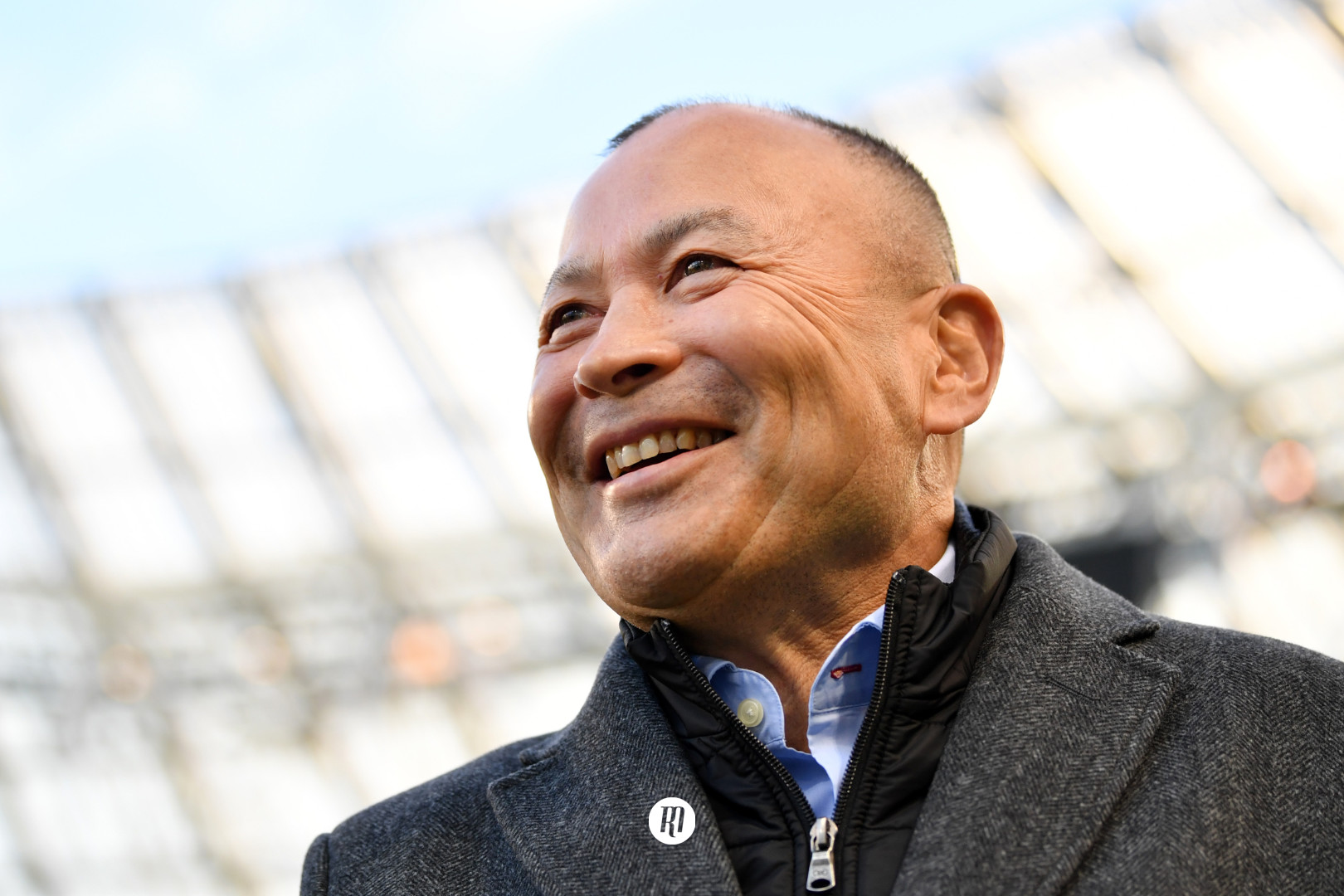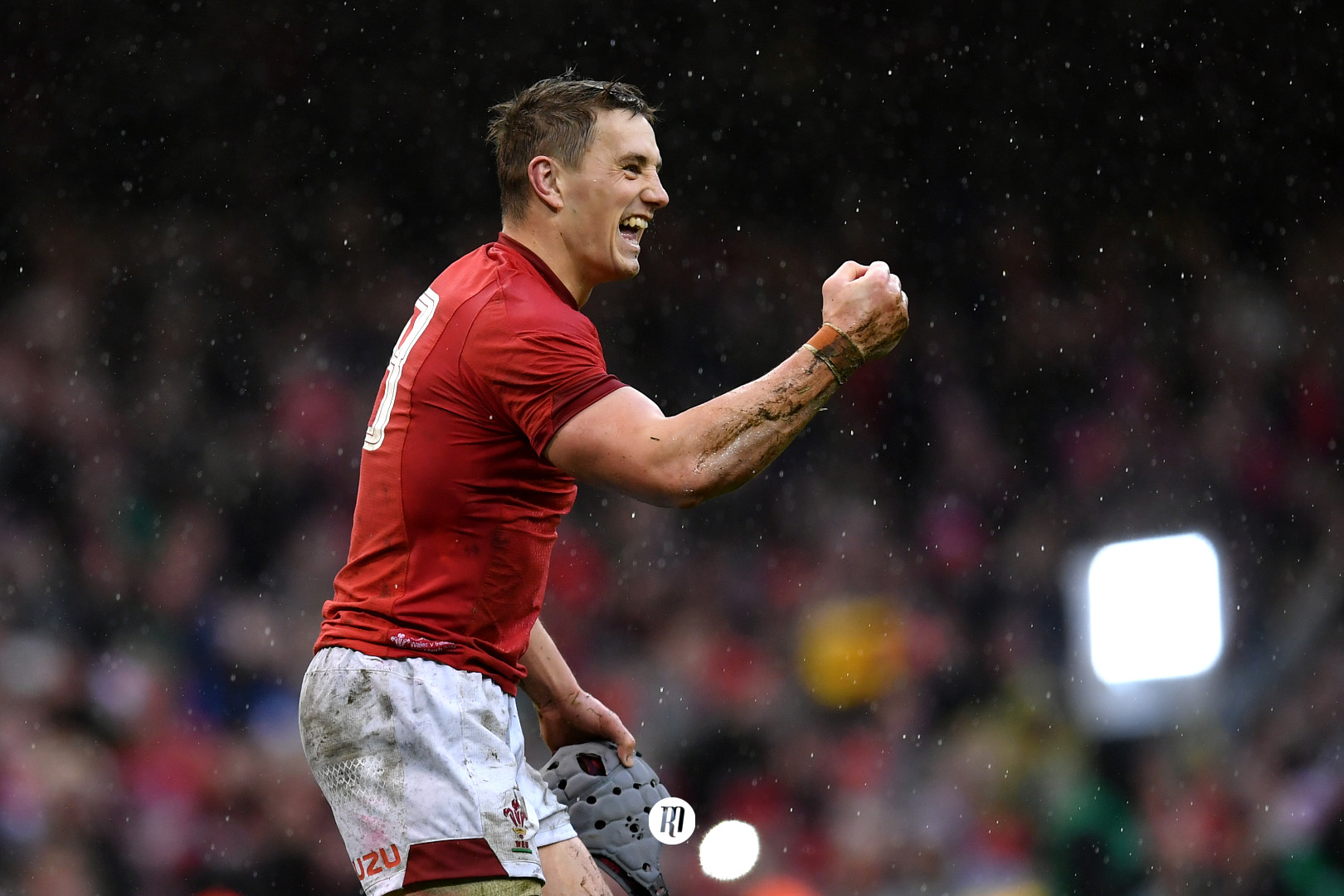Hooking headaches, a scrum-half paradox and Big Joe's temptation: England's Warm Up Window
Rejoice English fans, rugby returns in terrific fashion this weekend, with those old rivals the Welsh making the trip east to England’s Concrete Kingdom, Twickenham. There is much to do and to decide on for Eddie Jones’s newly brash England side, with one or two pages of Jones’s playbook torn and cast aside in late 2018. With these changes and the excitingly ominous World Cup shadow beginning to loom, Ali Stokes takes a look at the areas Jones and his fellow coaches will be keen to address across the quartet of warm-up games throughout August and September.
What makes England’s World Cup run-in all the more important is the fact that Jones - alongside the relatively newly-installed coaching duo of Scott Wisemantel (attack) and John Mitchell (defence) and forwards coach Steve Borthwick - somewhat revolutionised his team’s composition. A turbulent 2018 Six Nations campaign and subsequent summer tour of South Africa gave birth to the increasingly dynamic balance that currently resides throughout the squad, seeing the likes of Dan Cole, Danny Care and Chris Robshaw jettisoned to give way to a far more explosive team.
With Kyle Sinckler, Manu Tuilagi, Jamie George, Henry Slade and Elliot Daly handed starting or new roles, and the abandonment of playing a lock in the six jersey, England’s make-up has been significantly altered.
While 2018's reshuffle has proven much the better for the Jones’s team, it is as finely balanced as a paper aeroplane, one wrinkle, one wrong fold and this latest edition of the Red Rose could fly lame, falling short of the mark. This fragility could present the largest concern facing the coaching contingent, while excitement borne of a coming within a cat’s whisker of the All Blacks and a handful of powerful Six nations victories will provide the nervous energy hidden behind the touchline frowns and media soundbites.
The mini-revolution within England’s starting XV prior to the 2018 November internationals has bestowed a much-improved balance, it has raised plenty of question marks over certain positions and left combinations little to no time to gel thus far.
A number of notable names have been excluded from the latest England squad announcement, including Saracens scrum-half Ben Spencer, the currently clubless Ben Te’o, Harlequins’ Mike Brown, to name a few, but with Jones stating that: “players excluded from being involved in this camp are naturally disappointed but may get another opportunity so they must be ready”, it’s fair to assume that the 33-man squad named earlier today for the first summer game against Wales could see a number of chops and changes once the final 31-man World Cup squad is named on Monday after the Wales clash. The task at hand for those retained in this morning's squad yet destined not to make the final squad is to covince selectors that they are the next cabs off the rank when, as they inevitably must, injuries strike.
The scrum-half paradox
At one time a mainstay in this England side and often the spark that ignited Jones’s famed ‘finishers’, Danny Care, the second-most capped scrum-half in English history on 84 caps, behind the current incumbent Ben Youngs on 87, will be watching the 2019 World Cup from his London home; if he watches at all.
With Saracens’ Richard Wigglesworth and Wasps’ Dan Robson seemingly out of the World cup mix following injury-troubled seasons, it falls to Wigglesworth’s clubmate Ben Spencer and Gloucester skipper Willi Heinz to compete for the role of Youngs’ understudy. Truthfully, you cannot find many major faults in Spencer and Heinz’s games, with a relatively healthy balance between game managing box-kicking routines and quick, reliable service when fast ball is needed. However, Heinz is yet to earn a single cap, while Spencer is yet to accumulate more than 20 minutes of test rugby throughout his three-cap England career to date.
Jones’s reluctance to hand Robson minutes from the bench during the Six Nations in games already won or in need of a change of pace leaves lingering doubts over his decision-making process at half-back, arguably the biggest mistake of his England tenure to date. While Youngs himself can boast a healthy working relationship with captain and fly-half Owen Farrell over a seven-year international career together and with fellow Leicester Tiger and second-choice fly-half George Ford, Heinz is yet to accomplish anything more than training sessions alongside his new teammates. Spencer can fall back on a well-travelled partnership with Farrell throughout a trophy-laden Saracens career, but a glaring dearth of game time at international level, and alongside fellow reserve halfback Ford, is a matter of befuddling concern for England.
Throughout these four warm-up matches, Jones will have to decide just how much rugby to afford either of Spencer or Heinz, while handing Youngs ample game time in the lead up to the World Cup. Watch closely how this duo are deployed over these next few weeks, the aforementioned paper aeroplane’s rudder could be kinked by Jones’s squad selection.
A hooking headache
The issue at hooker is much the same as the one at scrum-half for England, so we’ll touch on this one only briefly. With the ‘grumbly knee’ that seems to have put pains to captain Dylan Hartley’s hopes of joining the exclusive group of Test centurions, currently held on an agonising 97, Jones has yet again found himself stuck for experienced replacements in a specialist position. Yet another medal-laden Saracen has taken up a starting position for England, with Jamie George putting himself forward as the best man for the job, even before Hartley’s untimely knee injury. George’s Test career is near faultless, with the 28-year-old going some way to contribute to England’s greatly improved dynamism.
However, behind George, only Exeter’s Luke Cowan-Dickie owns actual caps. Saracens’ Jack Singleton and Bath’s Tom Dunn are yet to feature for England; although impressive performances for uncapped England XV performances against the Barbarians over the last two years do, at least, bode well. Most concerningly, there is some doubt over both Cowan-Dickie’s and Dunn’s lineout throwing for country and club respectively. Much like the nine jersey, Jones will have to think long and hard about how much game time he allows Cowan-Dickie, Singleton and Dunn while avoiding a cold start for George.
Big Billy’s backup
Like the recently returned, once prolific Leicester midfielder Manu Tuilagi, England and Saracens number eight Billy Vunipola has rarely been seen over the last two years thanks to injury. Fractures to both forearms, a smattering of lower limb complaints and a dislocated shoulder have deprived both club and country of his bulldozing presence. While Saracens dealt commendably with the long absences of the younger of their Vunipola brothers, big brother Mako pulling strings and pushing shoulders at loosehead, England were exposed for being over-reliant on their Australian-born number eight. Bristol’s Nathan Hughes, Exeter’s Sam Simmonds, Bath’s Zach Mercer and even former skipper Chris Robshaw have been trailed and subsequently excluded from the World Cup squad, leaving Big Billy as the sole specialist number eight, backed up by starting blindside Mark Wilson.
Now, with Billy back fit and under orders to slim down from his once 130kg frame, England will be forced to either trial a player other than Wilson or Vunipola at number eight or see both men handed considerable game time in the lead-up to the World Cup. Wasps’ Brad Shields, preferred at blindside but able to shift to the second row or eight, may have been England’s first choice, but a foot injury may see breakthrough Harlequins star Alex Dombrandt, who covers the same positions as Shields, or Northampton’s Lewis Ludlam win eleventh hour fights for a trip to Japan.
Either way, neither of Wilson or Vunipola can play 80 minutes of every game in their preferred positions without chancing a pre-World Cup injury, meaning fans are more than likely to be treated to some of the magic Dombrandt has been sprinkling at the Stoop this year or the hard-nosed, never-say-die play Ludlam has brought to Franklin’s Gardens. Should both Dombrandt and Ludlam fail to catch Jones’s eye enough to travel to Japan, England will head to the World Cup with two blindside flankers as reserve for the often laid up Vunipola.
The temptation of Big Joe
One point Jones made often and clearly during the first half of his four-year England career to date was his desire to increase the average weight of his backline. Speaking before the 2017 summer tour to Argentina, Jones commented: “We need some more size in the backs, that’s one thing I’m convinced of.”
Since then Jones has finally been able to include a fit pairing of Ben Te’o (6ft2” and 106kg) and Manu Tuilagi (6ft1” and 111kg), both centres, and the man of the moment, Joe Cokanasiga. Cokanasiga, weighing in at a frightening 6ft3” and 122kg, seems to be the final of Jones’s sizeable backline additions.
Bar injuries to outside centres Henry Slade and Jonathan Joseph, it is unlikely Jones will field both Te’o and Tuilagi in the centres. Cokanasiga currently sits at least fourth in the wing pecking order behind Jonny May, Anthony Watson and Jack Nowell, the latter of whom is currently on his return to fitness following an ankle injury sustained during the Premiership final in June that required surgery. This leaves Jones with one out of three of his giant backs in his starting XV, a number he could easily choose to increase during the World Cup should England struggle to gain momentum.
With the risk of becoming far too one-dimensional with a Te’o-Tuilagi midfield and Jones’s fondness of a playmaker in the centres, through either captain Farrell or Slade, Cokanasiga is the most likely to join Tuilagi in the starting XV, or the 23 jersey at the very least. How often, and in what back three combination, Jones deploys his giant 21-year-old, Fijian-born winger should catch the interest in these games against Wales (x2), Ireland and Italy. England has regularly opted for a workhorse and a racehorse combination at 11 and 14 either side of Elliot Daly at fullback, meaning that Jack Nowell’s spot on the left wing is most at risk of being stolen by a giant-sized teammate. This, in turn, leaves May and Watson to fight it out for the 14 jersey, the jersey that May currently occupies and is unlikely to be ejected from after scoring 14 tries in his last 15 Tests.
With a number of these names included during this first warm-up gameweek squad, Spencer and Te’o standing as the most notable exclusions, here’s a squad I’d like to see face Wales at Twickenham. Notably, Willie Heinz, Ruaridh McConnachie and Jack Singleton earn their shots to convince enough to ensure they are the first ports of call in England’s World Cup squad should injury strike, with the same train of thought for Charlie Ewels and Lewis Ludlam from the bench.
1. Joe Marler
2. Jack Singleton
3. Kyle Sinckler
4. Maro Itoje
5. George Kruis
6. Mark Wilson
7. Sam Underhill
8. Billy Vunipola
9. Willi Heinz
10. Owen Farrell
11. Joe Cokanasiga
12. Manu Tuilagi
13. Henry Slade
14. Ruaridh McConnachie
15. Anthony Watson
16. Jamie George
17. Ellis Genge
18. Dan Cole
19. Charlie Ewels
20. Lewis Ludlam
21. Ben Youngs
22. George Ford
23. Elliot Daly

Filed under:
International, Rugby World Cup, England
Written by: Alistair Stokes
Follow: @alistokesrugby · @therugbymag
